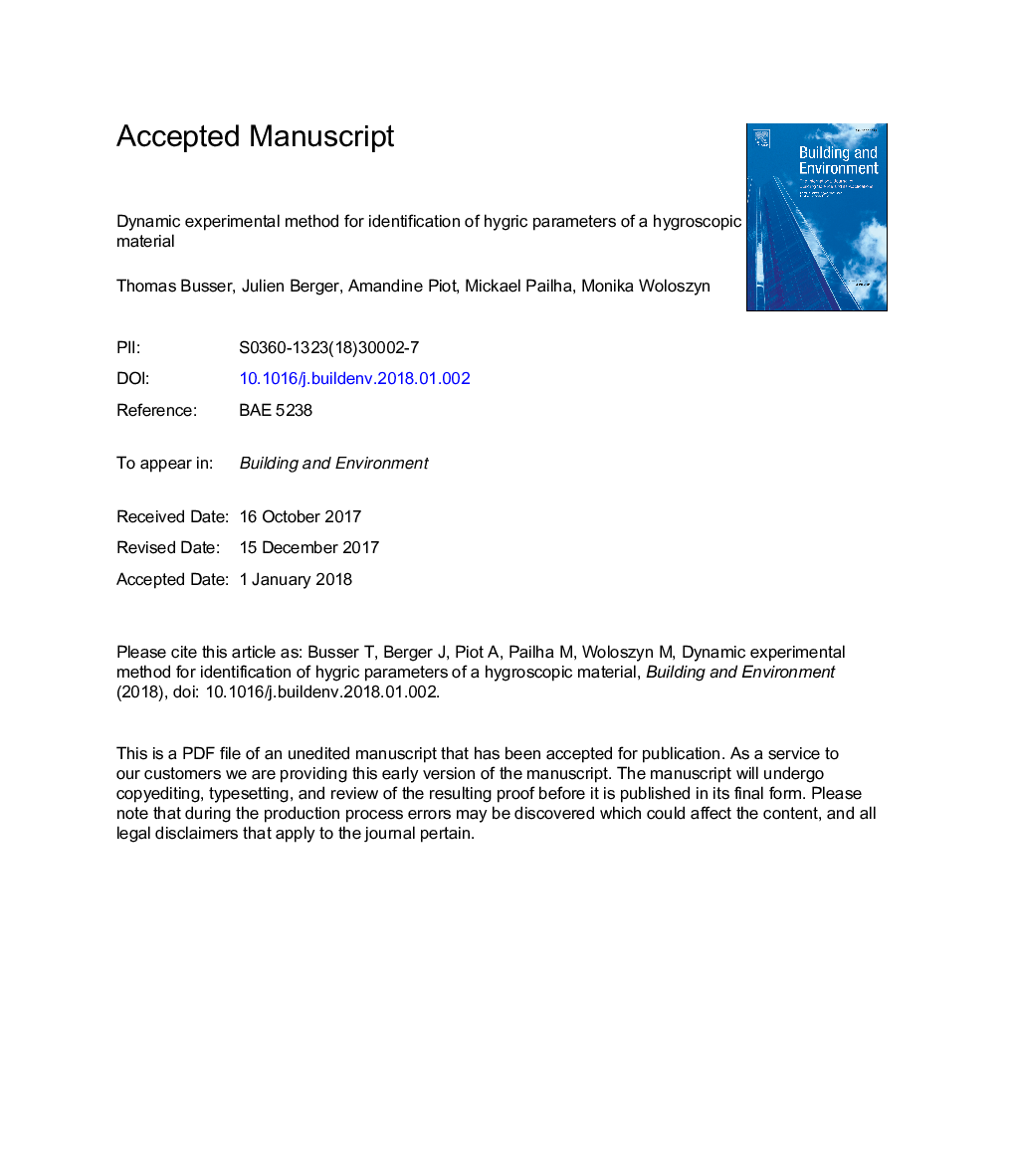| Article ID | Journal | Published Year | Pages | File Type |
|---|---|---|---|---|
| 6698061 | Building and Environment | 2018 | 40 Pages |
Abstract
The standard methods to determine the vapour permeability and the moisture sorption curve may lack of accuracy since discrepancies are observed when comparing numerical predictions to experimental data. Moreover, these properties are determined in steady state conditions while the numerical predictions are carried in transient regime. Thus, this paper presents an experimental design to estimate these properties using dynamic measurements and identification method. The experimental facility is presented, enabling to measure at the same time the relative humidity within the material and the total moisture content. The performance of the facility and protocol in terms of reproducibility, uncertainty and direction of heat and moisture transfers are checked, confirming the abilities of the set-up. Then, experimental results are used to determine the hygrothermal material properties using a trust-region algorithm. Investigations are done to analyse important issues as the choice of the observation: relative humidity and/or mass measurements, to solve the parameter estimation problem. The estimated properties are finally validated by comparing the numerical predictions with experimental data for other boundary conditions.
Keywords
Related Topics
Physical Sciences and Engineering
Energy
Renewable Energy, Sustainability and the Environment
Authors
Thomas Busser, Julien Berger, Amandine Piot, Mickael Pailha, Monika Woloszyn,
